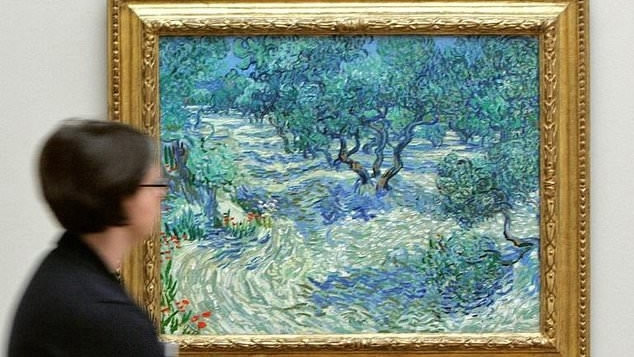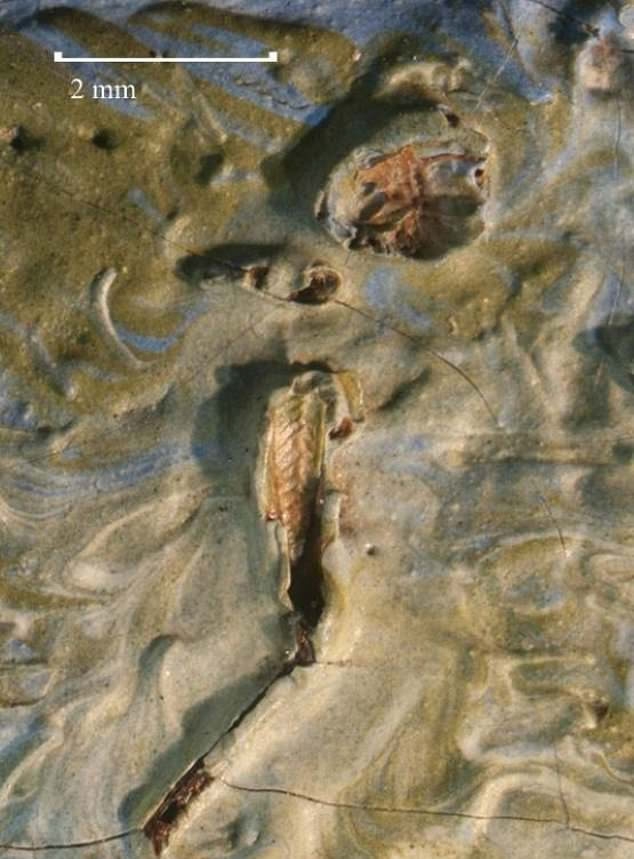
Culture
08:33, 09-Nov-2017
Dead bug discovered in Van Gogh painting
CGTN

A Kansas City museum found a grasshopper trapped in a Vincent van Gogh painting for 128 years.
Mary Schafer, a conservator at the Nelson-Atkins Museum of Art, came across the tiny dried, brown carcass in the lower foreground while studying the painting of olive groves.
"I was mainly trying to understand the different layers of the painting and how it was constructed, and that's how I came upon part of the body of this little grasshopper," she said.
"The fact that we have this little surprise of a grasshopper is a fun way to have a new look at a Van Gogh."

This photomicrograph courtesy the Nelson-Atkins Museum of Art captures a grasshopper embedded in Van Gogh's painting. /AFP Photo
This photomicrograph courtesy the Nelson-Atkins Museum of Art captures a grasshopper embedded in Van Gogh's painting. /AFP Photo
The find, announced this week, reflects the artist's practice of painting in the outdoors, where it was often windy enough to send dust, grass and insects flying.
"I must have picked up a good hundred flies and more off the four canvases that you'll be getting, not to mention dust and sand," van Gogh mused in an 1885 letter to his brother Theo.
"When one carries them across the heath and through hedgerows for a few hours, the odd branch or two scrapes across them."
But Van Gogh was no bug killer.

Self-Portrait with felt hat, 1888, by Vincent van Gogh (1853-1890). /Getty Images
Self-Portrait with felt hat, 1888, by Vincent van Gogh (1853-1890). /Getty Images
Paleo-entomologist Michael Engel of the University of Kansas told the museum's team that the grasshopper's thorax and abdomen were missing, and no sign of movement was evident in the paint around the insect, indicating it was already dead when it landed on van Gogh's canvas.
"Olive Trees" is part of a series of some 18 paintings Van Gogh completed on the subject in 1889 in Saint-Remy-de-Provence, France, where he had checked himself into an asylum. He died the following year.
Sand was also found in "Seascape near Les Saintes-Maries-de-la-Mer" (1888), a work he is believed to have painted from the beach on the Mediterranean. It is now held at the Van Gogh Museum in Amsterdam.

Visitor look at the painting "Olive Trees," painted in 1889 by Dutch artist Vincent van Gogh. /AFP Photo
Visitor look at the painting "Olive Trees," painted in 1889 by Dutch artist Vincent van Gogh. /AFP Photo
The Nelson-Atkins museum made its own find as part of an effort involving curators, conservators and outside scientists to take a fresh look at its collection of 104 French paintings and pastels using a variety of tools, including x-rays, ultraviolet light, the microscope and taking minuscule samples of the work.
Looking at a tiny slice of "Olive Trees," conservation scientist John Twilley determined that van Gogh had used a type of red lake pigment that faded over time due to light exposure.
Source(s): AFP

SITEMAP
Copyright © 2018 CGTN. Beijing ICP prepared NO.16065310-3
Copyright © 2018 CGTN. Beijing ICP prepared NO.16065310-3